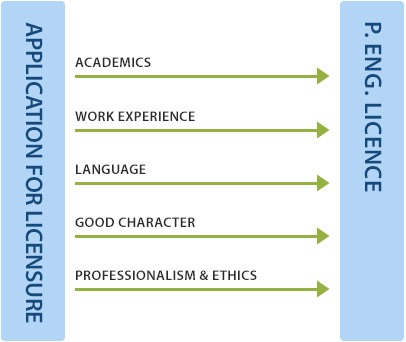
The five requirements
To become a licensed engineer in Canada, you must prove that you meet five requirements to the engineering regulator in the province or territory where you’d like to practise:
- Academic: You have obtained an engineering education.
- Work experience: You have supervised work experience that demonstrates your ability to apply engineering knowledge.
- Language: You communicate competently in at least one of Canada’s two official languages.
- Good character: You have demonstrated truth, honesty and trustworthiness in your conduct.
- Professionalism and ethics: You have passed the Professional Practice Examination (PPE).
If you do not yet know in which province or territory you will settle, then start by learning about locations, skills and jobs.
To better understand the process for getting your licence, visit How to apply for licensure.
To learn more about the specific requirements for the different regulators, visit provincial and territorial engineering regulators.






